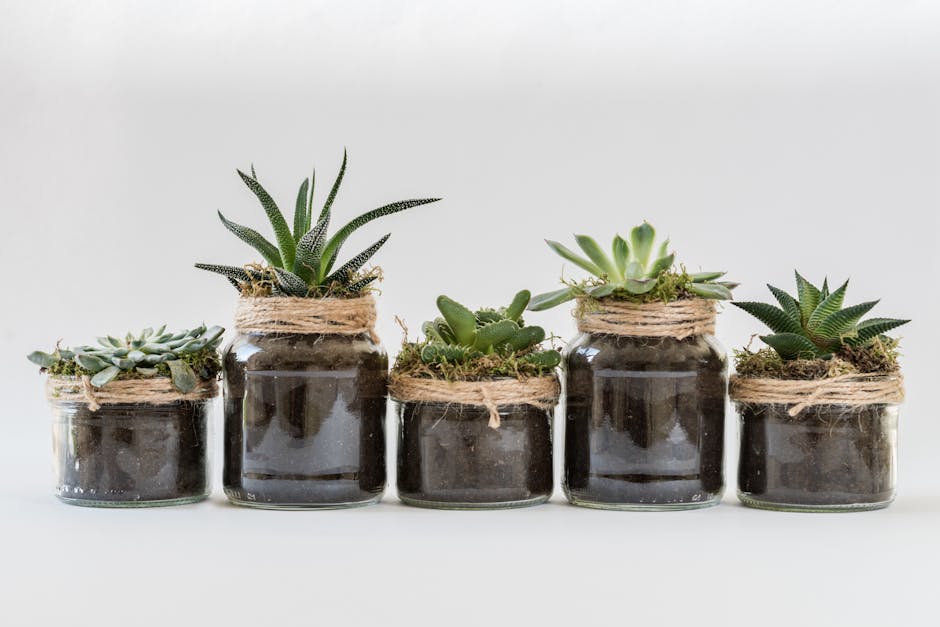Welcome to the world of plant care where even the most seasoned plant experts can sometimes stumble. Whether you’re a green thumb guru or just starting your plant journey, avoiding common mistakes is crucial to keeping your leafy friends happy and thriving.
1. The Pitfalls of Overwatering Your Plants
One of the most common mistakes even plant experts fall into is overwatering their plants. While watering is vital for plant growth, too much of it can drown the roots and lead to root rot. It’s important to understand the specific watering needs of each plant species you own to prevent overwatering and ensure they thrive. Remember, when in doubt, let the soil dry out before watering again.
Overwatering not only suffocates the roots but also deprives them of essential oxygen. Signs of overwatering include yellowing leaves, moldy soil, and a musty smell. To avoid this mistake, always check the soil moisture before reaching for the watering can. Your plants will thank you for finding the perfect balance between hydration and aeration.
A key tip to avoid overwatering is to use pots with drainage holes. Proper drainage allows excess water to escape, preventing waterlogged soil and root suffocation. Remember, it’s better to underwater your plants slightly than to drown them with kindness. Your plants will thrive when you strike the right balance.
2. Ignoring the Signs of Nutrient Deficiencies
As a plant enthusiast, it’s crucial to recognize the signs of nutrient deficiencies in your plants. Yellowing or browning leaves, stunted growth, and leaf discoloration are common indicators that your plants may be lacking essential nutrients like nitrogen, potassium, or magnesium. Ignoring these signs can lead to poor plant health and growth.
To avoid this mistake, regularly fertilize your plants with a balanced fertilizer to replenish any missing nutrients. Understanding the specific nutrient needs of different plant species is key to ensuring they receive the right nourishment. By addressing any deficiencies promptly, you can help your plants flourish and thrive.
3. Choosing the Wrong Soil for Your Green Friends
Selecting the right soil for your plants is essential for their overall health and well-being. Different plant species have varying soil requirements, such as well-draining soil for succulents and cacti, or rich, loamy soil for tropical plants. Using the wrong type of soil can impact water retention, root aeration, and nutrient uptake.
Avoid the mistake of choosing unsuitable soil by researching the specific needs of each plant you own. Invest in quality potting mix that is tailored to your plant’s preferences to provide them with the ideal growing medium. Remember, the foundation of a healthy plant starts with the right soil.
4. Too Much Sun: A Common Plant Care Misstep
While sunlight is essential for plant photosynthesis, too much sun exposure can harm your plants. Sunburned leaves, wilting, and dried-out soil are signs that your plants may be getting too much direct sunlight. Understanding the light requirements of your plants is crucial to avoiding this common mistake.
To prevent sun damage, monitor the sunlight exposure your plants receive throughout the day. Consider placing light-sensitive plants in areas with filtered light or partial shade to protect them from intense sun rays. By striking the right balance between light and shade, you can ensure your plants thrive under the sun’s nurturing glow.
5. Underestimating the Importance of Pruning
Pruning is an essential aspect of plant care that is often overlooked by even seasoned plant experts. Regularly trimming dead or overgrown branches promotes healthy growth, improves air circulation, and enhances the overall appearance of your plants. Neglecting pruning can result in unruly growth and decreased plant vitality.
To avoid this mistake, make pruning a routine part of your plant care regimen. Use clean, sharp tools to trim away dead or diseased parts, allowing new growth to flourish. Remember, pruning not only benefits the plant’s health but also encourages bushier, more vibrant growth for a thriving indoor garden.
6. The Perils of Overcrowding Your Plant Family
Creating a plant jungle may seem like a dream come true, but overcrowding your plant family can lead to competition for resources, restricted growth, and increased risk of pests and diseases. Each plant species requires adequate space to spread its roots and receive ample sunlight and airflow.
To avoid the perils of overcrowding, space out your plants according to their size and growth habits. Regularly assess the placement of your plants to prevent overcrowding and allow each plant to thrive individually. Remember, a harmonious plant family is one where each member has room to grow and shine.
7. Not Providing Adequate Drainage: A Plant Lover’s Blunder
Proper drainage is a cornerstone of healthy plant care that is sometimes overlooked even by plant experts. Poor drainage can lead to waterlogged soil, root rot, and increased susceptibility to fungal infections. Ensuring your pots have adequate drainage holes is essential for maintaining plant health.
To avoid this blunder, choose pots with drainage holes to allow excess water to escape and prevent water from pooling at the bottom. You can also use a layer of gravel or perlite at the bottom of your pots to improve drainage. Remember, healthy roots require oxygen as much as water, so don’t let your plants drown in soggy soil.
Monitoring soil moisture levels and adjusting your watering frequency based on the specific needs of each plant is key to preventing waterlogging. By providing adequate drainage and proper watering practices, you can create an environment where your plants can thrive and flourish.


